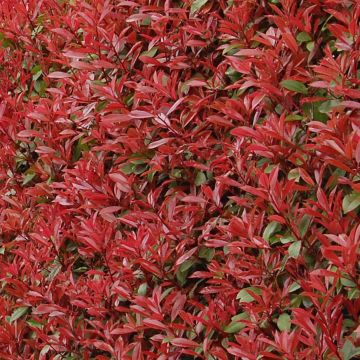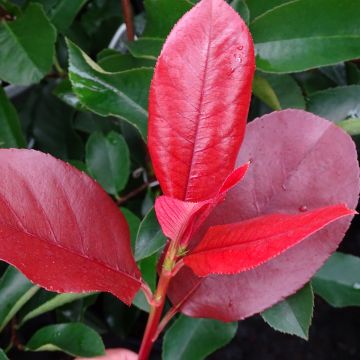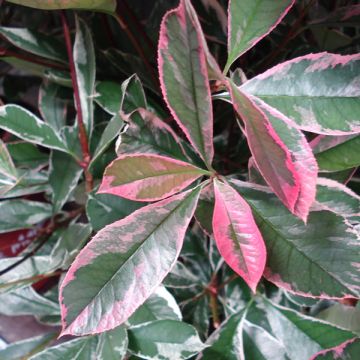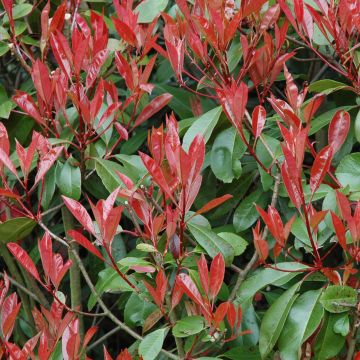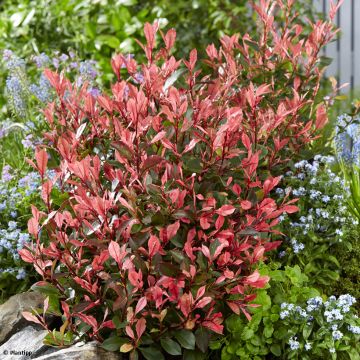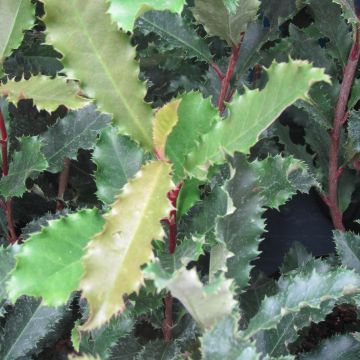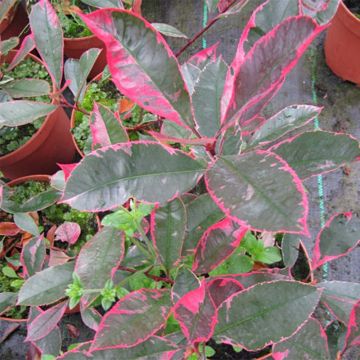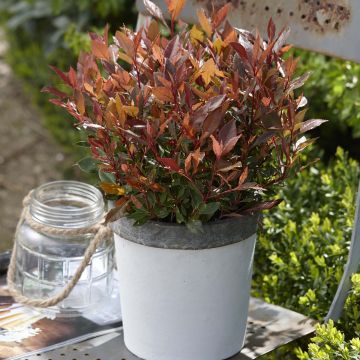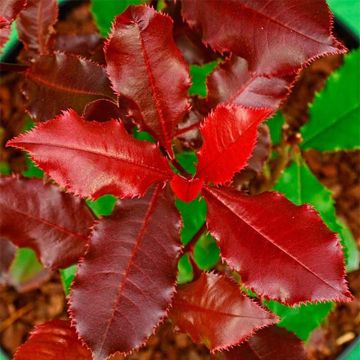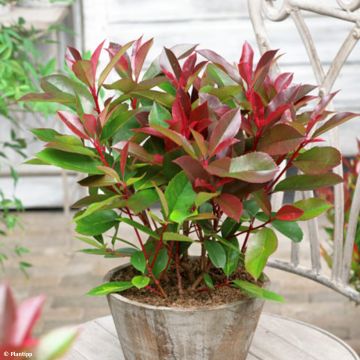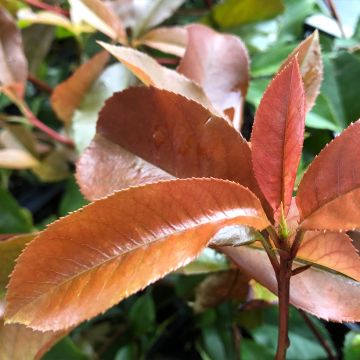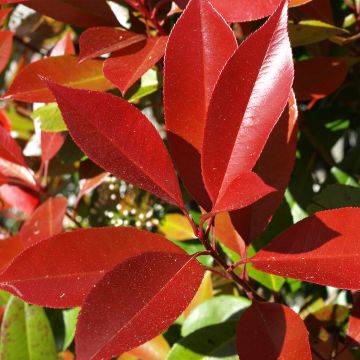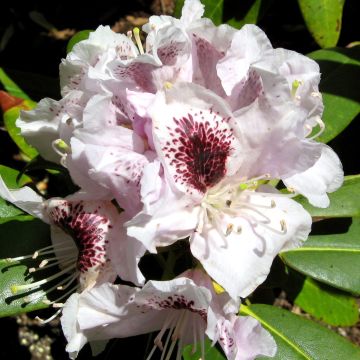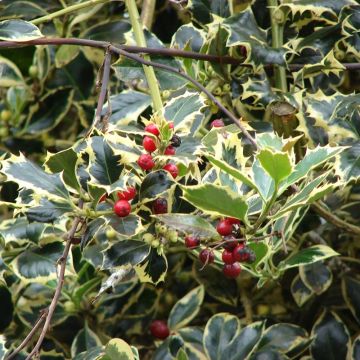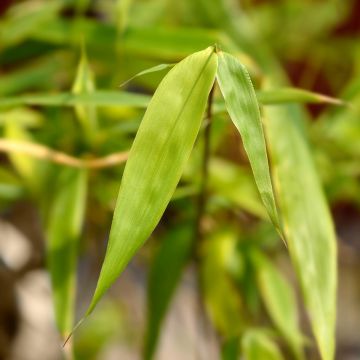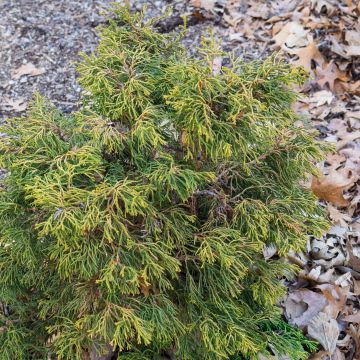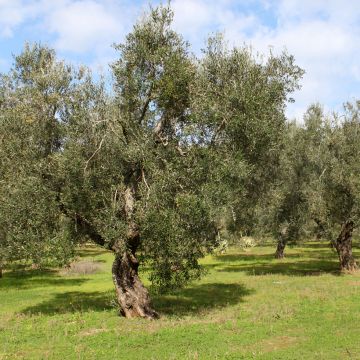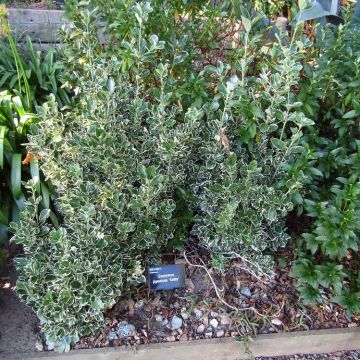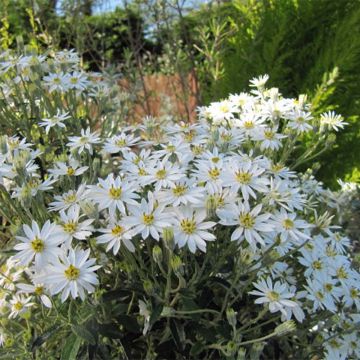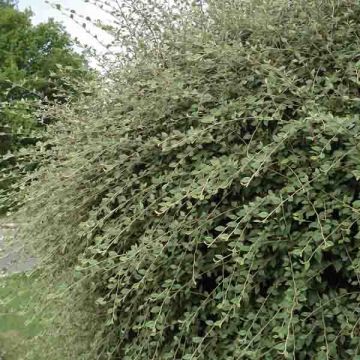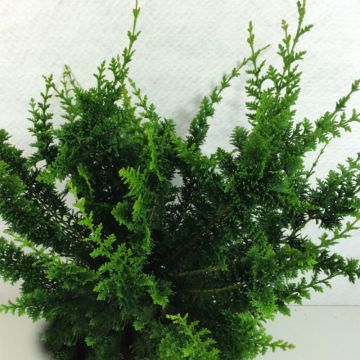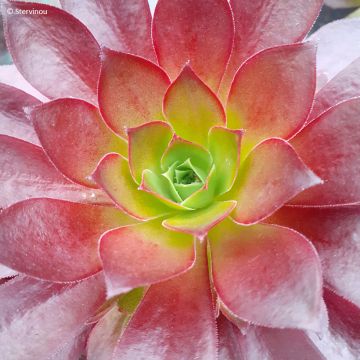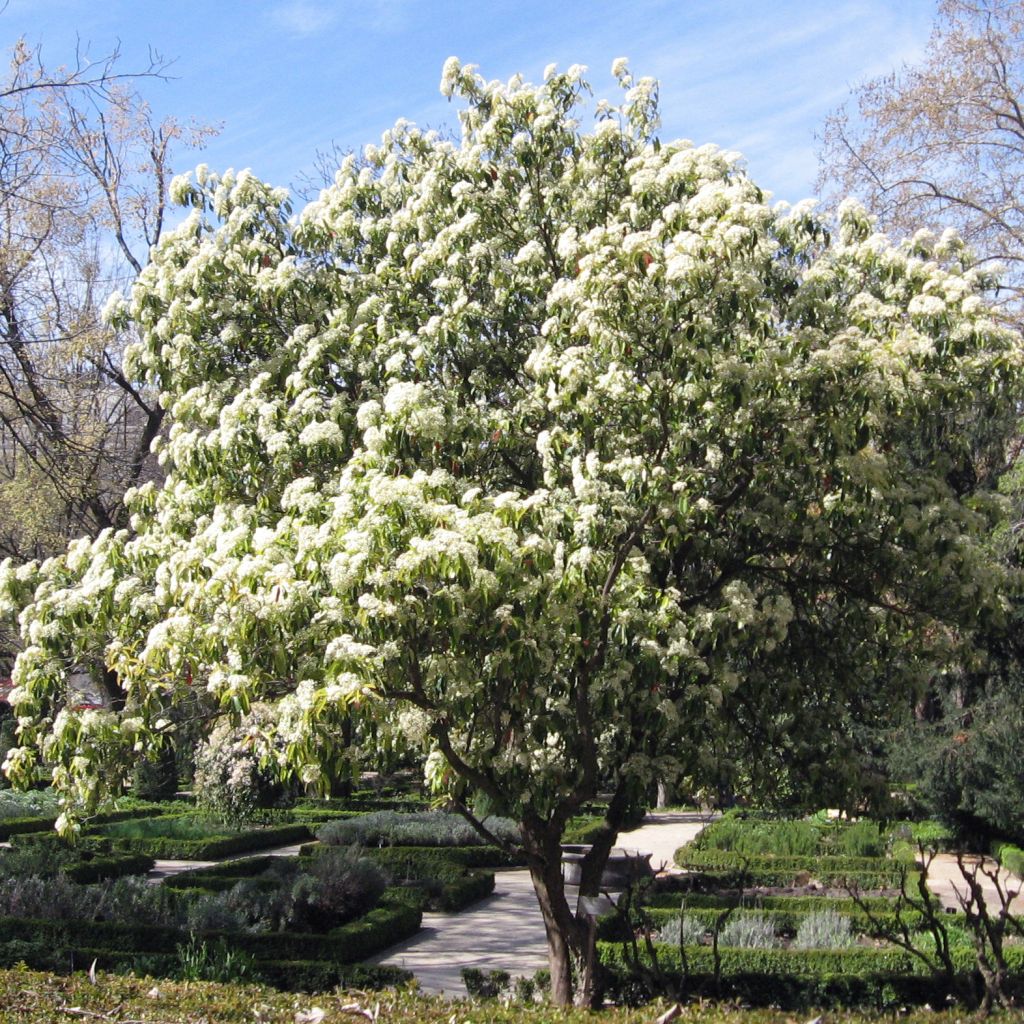

Photinia serratifolia - Photinia de Chine
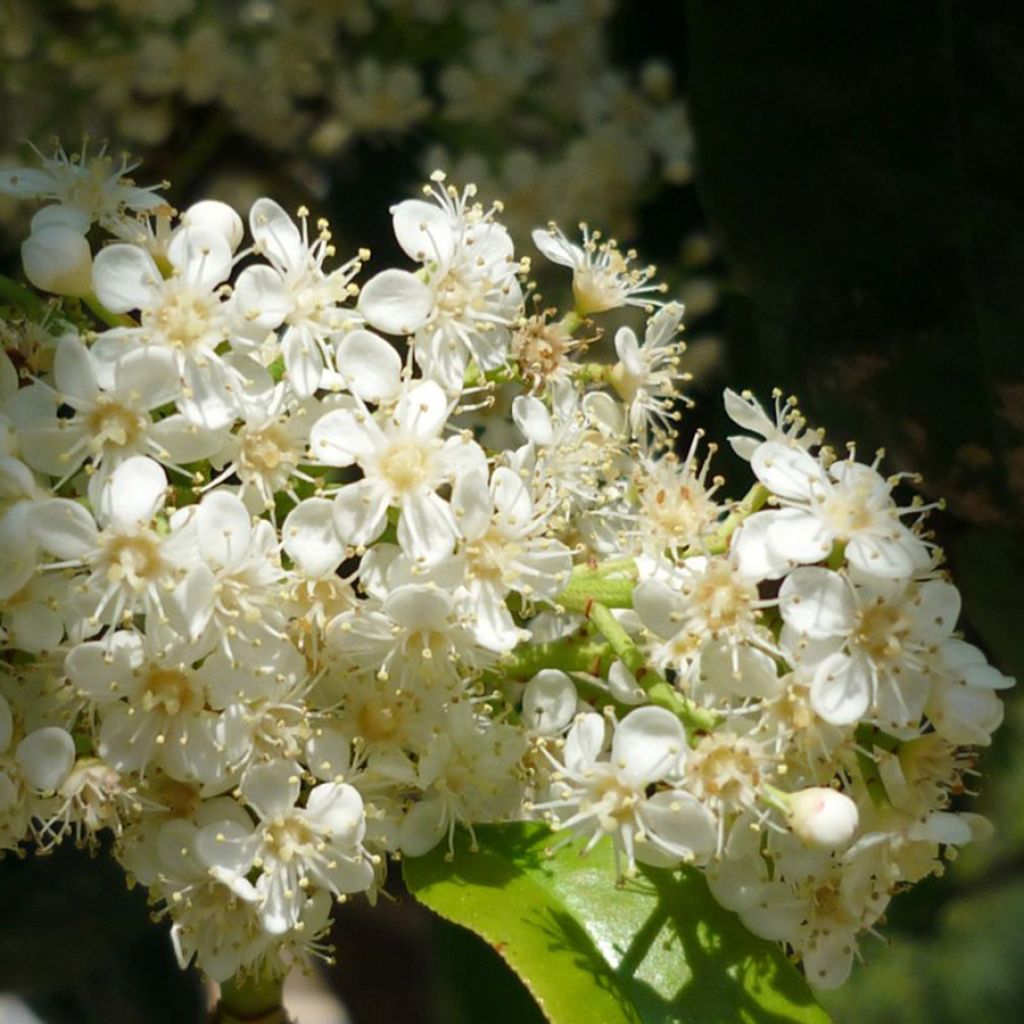

Photinia serratifolia - Photinia de Chine
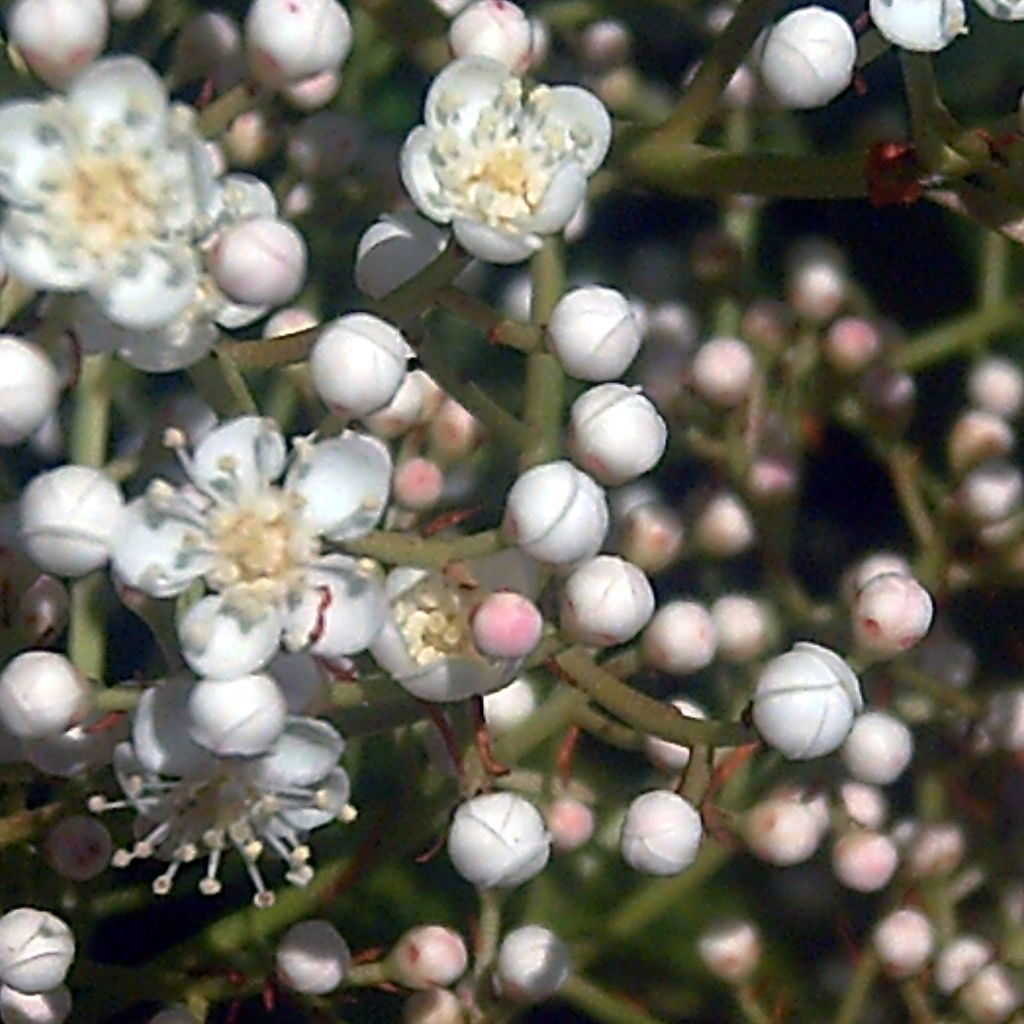

Photinia serratifolia - Photinia de Chine
Photinia serratifolia
Photinia serratifolia
Taiwanese Photinia, Chinese Photinia, Chinese Hawthorn
Why not try an alternative variety in stock?
View all →This plant carries a 24 months recovery warranty
More information
We guarantee the quality of our plants for a full growing cycle, and will replace at our expense any plant that fails to recover under normal climatic and planting conditions.
From €5.90 for pickup delivery and €6.90 for home delivery
Express home delivery from €8.90.
Does this plant fit my garden?
Set up your Plantfit profile →
Description
The Photinia serratifolia, of Asian origin, is a tall bush, vigorous and moderately hardy, with a rounded habit and dense foliage, adorned with dark green decorative evergreen leaves, whose young leaves are beautifully tinted with rose-bronze. Its grey bark, red-brown at maturity, tends to flake off. From April to June, large flat corymbs of small white flower blooms, followed in autumn by round fruits. This photinia, particularly ornamental throughout the year, will be perfect for use as a specimen tree or for hedge planting.
This small evergreen tree or tall bush, with a bushy habit and rapid growth, has dense foliage, a spreading crown, and gray bark, red-brown at maturity, which flakes off. Commonly called Chinese Photinia, it is native to China and Japan and belongs to the Rosaceae family. It has highly decorative foliage, consisting of large leaves, 10 to 20 cm (4 to 8in) long, ovate, dentate, leathery and glossy, dark green, beautifully tinted with rose-bronze in spring. In autumn and winter, a number of leaves take on beautiful reddish hues. Its small white flowers, arranged in flat corymbose panicles, 10 to 20 cm (4 to 8in) in diameter, bloom from April to June, and are followed in autumn by small spherical fruits, initially green, then red, and finally purple-brown. It reaches a height of about 4 to 6 m (13 to 20ft), with a spread of 2 to 3 m (7 to 10ft).
The genus name Photinia is derived from the Greek word photeinos, meaning bright or luminous, in relation to its glossy foliage. The specific epithet serratifolia comes from the Latin words serrula, meaning small saw, and folia, meaning leaf, referring to the leaves of this Chinese Photinia, which are edged with short and acute teeth.
Easy to cultivate and tolerant of drought once established, this Photinia appreciates a humus-rich, light soil with little lime, as well as a sunny or semi-shaded position. Moderately hardy, it will thrive in regions with harsh winters if planted in a sheltered location away from cold and dry winds, such as along a wall. It can be grown as a specimen tree or included in a group of trees or shrubs, along with a Pseudowintera colorata, a Tree Andromeda, a Viburnum, or a Physocarpus with purple leaves. But this Asian Photinia, with its dense habit and beautiful colored foliage, is especially well-suited for hedge formation, of varying heights depending on the desired size, in order to create a magnificent green screen or to hide a view. For hedge planting, maintain a planting distance of 1 m (3ft) between each plant. It is possible to create a mixed hedge with splendid colored foliage, flowers and berries, by combining it with a Metake Bamboo, a Firethorn, an Escallonia, a Cherry Laurel, Ceanothus, Skimmias, or other varieties of Photinias.
The Photinia, highly adaptable to pruning, can also be shaped as a cone, column, ball, etc.
Report an error about the product description
Photinia serratifolia in pictures
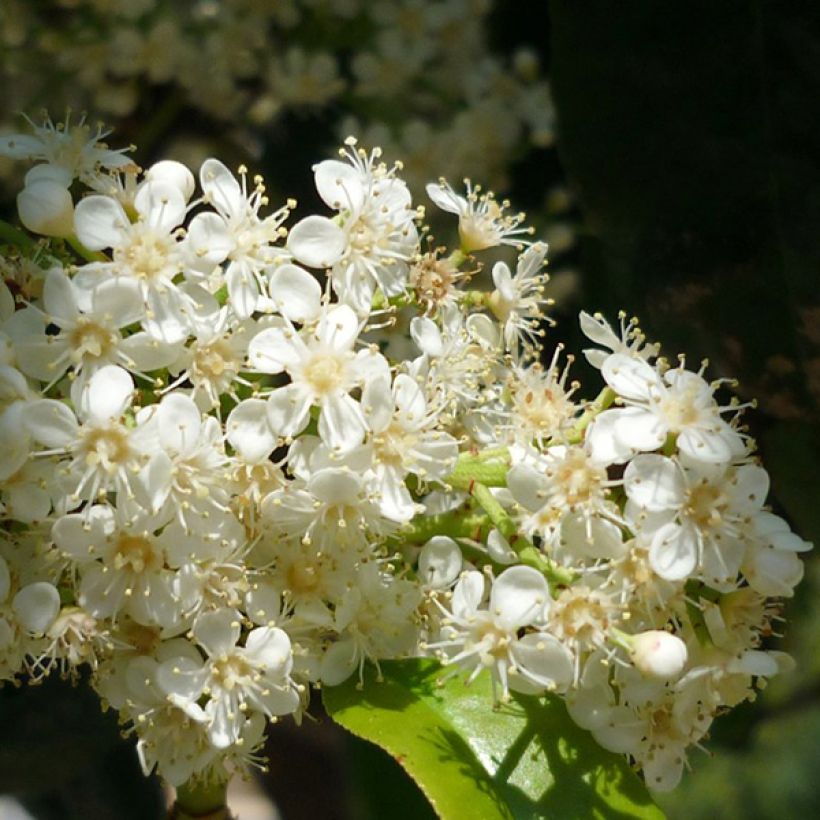

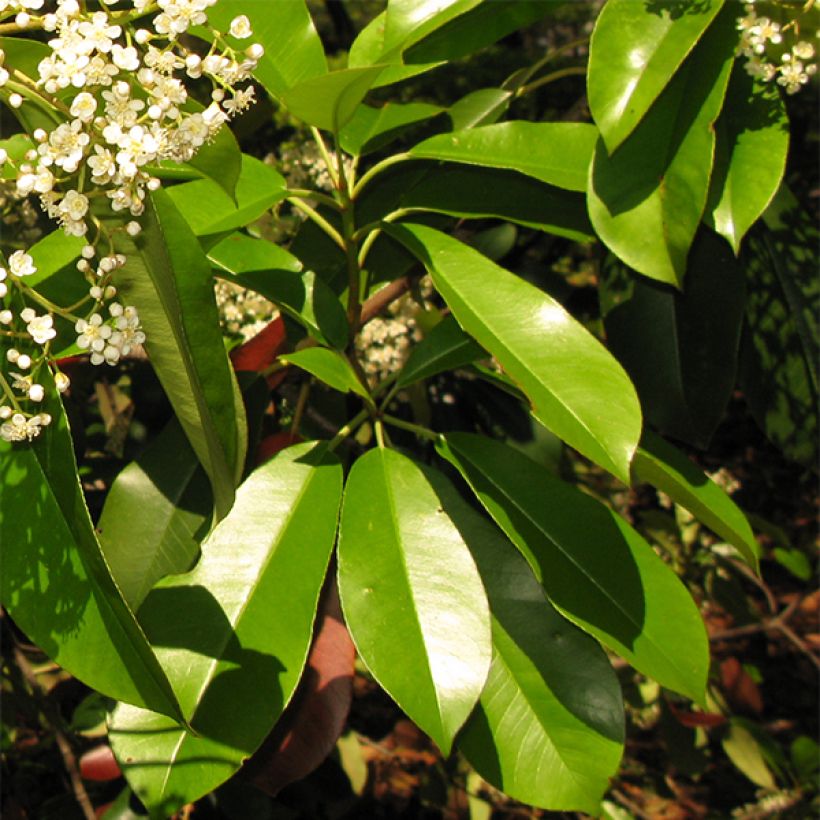

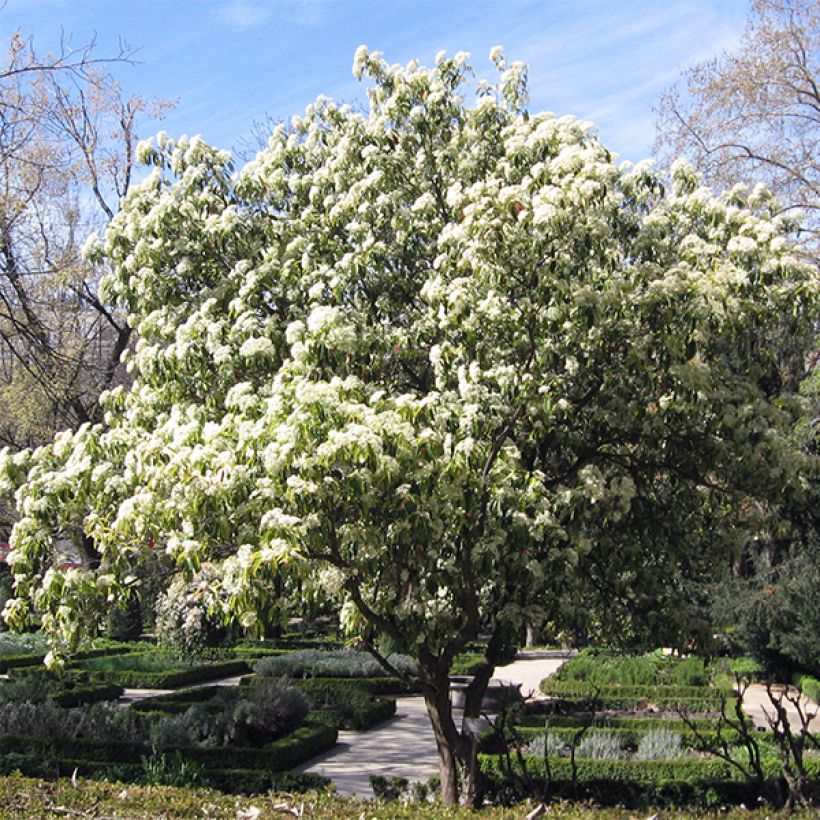

Plant habit
Flowering
Foliage
Botanical data
Photinia
serratifolia
Rosacées
Taiwanese Photinia, Chinese Photinia, Chinese Hawthorn
West Asia
Other Photinias
Planting and care
Easy to grow and quite tolerant to drought once well established, Photinia serratifolia thrives in full sun or partial shade, in a moist, fertile, and well-drained soil. Chalky and very compact clay soils should be avoided. Planting is preferably done in autumn, or spring, to promote root growth. A spring application of well-decomposed compost will benefit it, improving its growth and making its foliage even more brilliant. Moderately hardy, it can withstand temperatures down to -10°C (14°F), however its young shoots can be damaged by late frosts. In regions with harsh winters, it is advisable to plant this Photinia in a sheltered position, protected from cold and drying winds, against a wall. This variety may be susceptible to bacterial fire blight and powdery mildew, but it is very resistant to attacks from the fungi responsible for leaf spot disease, unlike other species of Photinia.
Planting period
Intended location
Care
This item has not been reviewed yet - be the first to leave a review about it.
Evergreen shrubs
Haven't found what you were looking for?
Hardiness is the lowest winter temperature a plant can endure without suffering serious damage or even dying. However, hardiness is affected by location (a sheltered area, such as a patio), protection (winter cover) and soil type (hardiness is improved by well-drained soil).

Photo Sharing Terms & Conditions
In order to encourage gardeners to interact and share their experiences, Promesse de fleurs offers various media enabling content to be uploaded onto its Site - in particular via the ‘Photo sharing’ module.
The User agrees to refrain from:
- Posting any content that is illegal, prejudicial, insulting, racist, inciteful to hatred, revisionist, contrary to public decency, that infringes on privacy or on the privacy rights of third parties, in particular the publicity rights of persons and goods, intellectual property rights, or the right to privacy.
- Submitting content on behalf of a third party;
- Impersonate the identity of a third party and/or publish any personal information about a third party;
In general, the User undertakes to refrain from any unethical behaviour.
All Content (in particular text, comments, files, images, photos, videos, creative works, etc.), which may be subject to property or intellectual property rights, image or other private rights, shall remain the property of the User, subject to the limited rights granted by the terms of the licence granted by Promesse de fleurs as stated below. Users are at liberty to publish or not to publish such Content on the Site, notably via the ‘Photo Sharing’ facility, and accept that this Content shall be made public and freely accessible, notably on the Internet.
Users further acknowledge, undertake to have ,and guarantee that they hold all necessary rights and permissions to publish such material on the Site, in particular with regard to the legislation in force pertaining to any privacy, property, intellectual property, image, or contractual rights, or rights of any other nature. By publishing such Content on the Site, Users acknowledge accepting full liability as publishers of the Content within the meaning of the law, and grant Promesse de fleurs, free of charge, an inclusive, worldwide licence for the said Content for the entire duration of its publication, including all reproduction, representation, up/downloading, displaying, performing, transmission, and storage rights.
Users also grant permission for their name to be linked to the Content and accept that this link may not always be made available.
By engaging in posting material, Users consent to their Content becoming automatically accessible on the Internet, in particular on other sites and/or blogs and/or web pages of the Promesse de fleurs site, including in particular social pages and the Promesse de fleurs catalogue.
Users may secure the removal of entrusted content free of charge by issuing a simple request via our contact form.
The flowering period indicated on our website applies to countries and regions located in USDA zone 8 (France, the United Kingdom, Ireland, the Netherlands, etc.)
It will vary according to where you live:
- In zones 9 to 10 (Italy, Spain, Greece, etc.), flowering will occur about 2 to 4 weeks earlier.
- In zones 6 to 7 (Germany, Poland, Slovenia, and lower mountainous regions), flowering will be delayed by 2 to 3 weeks.
- In zone 5 (Central Europe, Scandinavia), blooming will be delayed by 3 to 5 weeks.
In temperate climates, pruning of spring-flowering shrubs (forsythia, spireas, etc.) should be done just after flowering.
Pruning of summer-flowering shrubs (Indian Lilac, Perovskia, etc.) can be done in winter or spring.
In cold regions as well as with frost-sensitive plants, avoid pruning too early when severe frosts may still occur.
The planting period indicated on our website applies to countries and regions located in USDA zone 8 (France, United Kingdom, Ireland, Netherlands).
It will vary according to where you live:
- In Mediterranean zones (Marseille, Madrid, Milan, etc.), autumn and winter are the best planting periods.
- In continental zones (Strasbourg, Munich, Vienna, etc.), delay planting by 2 to 3 weeks in spring and bring it forward by 2 to 4 weeks in autumn.
- In mountainous regions (the Alps, Pyrenees, Carpathians, etc.), it is best to plant in late spring (May-June) or late summer (August-September).
The harvesting period indicated on our website applies to countries and regions in USDA zone 8 (France, England, Ireland, the Netherlands).
In colder areas (Scandinavia, Poland, Austria...) fruit and vegetable harvests are likely to be delayed by 3-4 weeks.
In warmer areas (Italy, Spain, Greece, etc.), harvesting will probably take place earlier, depending on weather conditions.
The sowing periods indicated on our website apply to countries and regions within USDA Zone 8 (France, UK, Ireland, Netherlands).
In colder areas (Scandinavia, Poland, Austria...), delay any outdoor sowing by 3-4 weeks, or sow under glass.
In warmer climes (Italy, Spain, Greece, etc.), bring outdoor sowing forward by a few weeks.

































